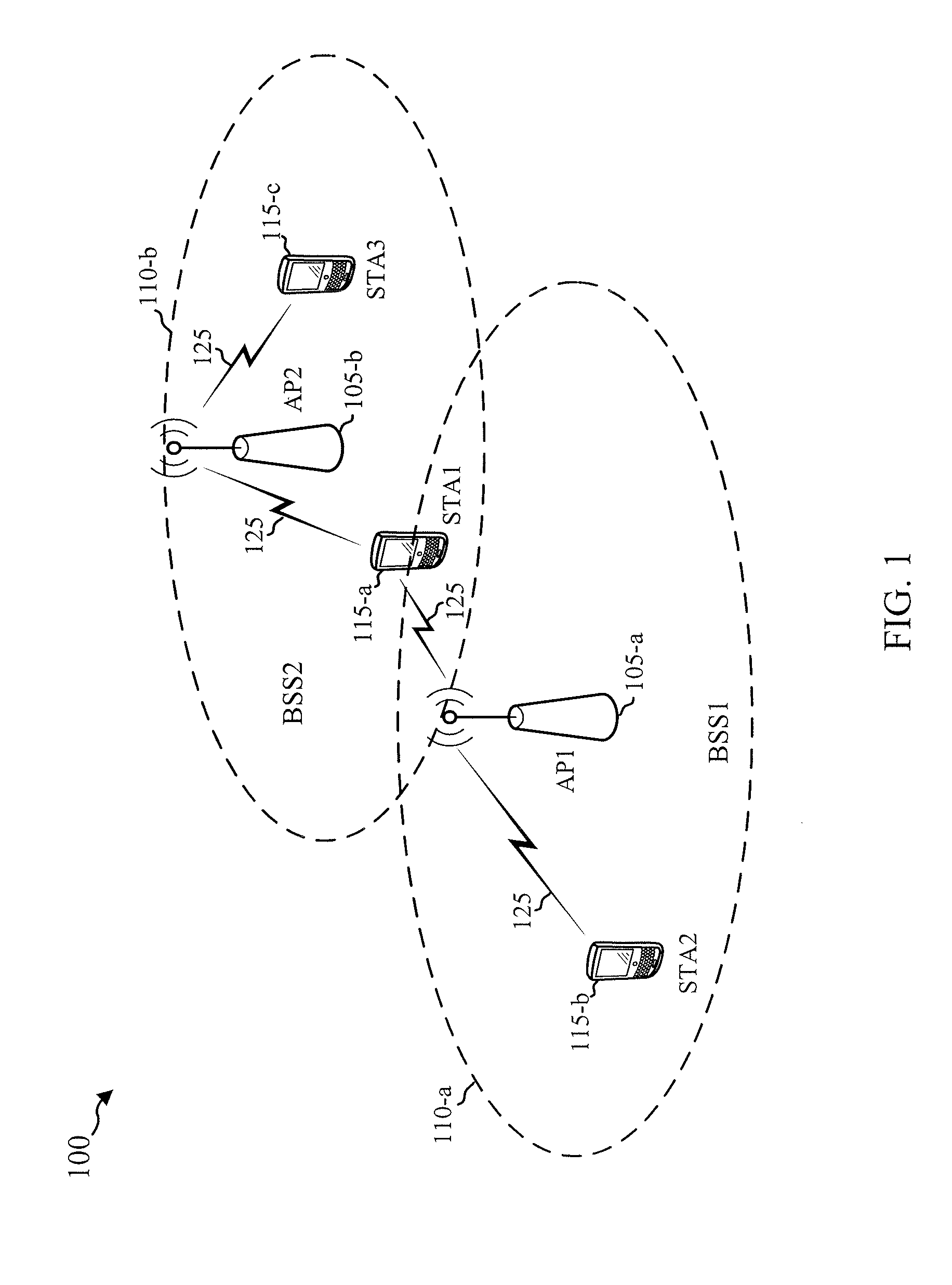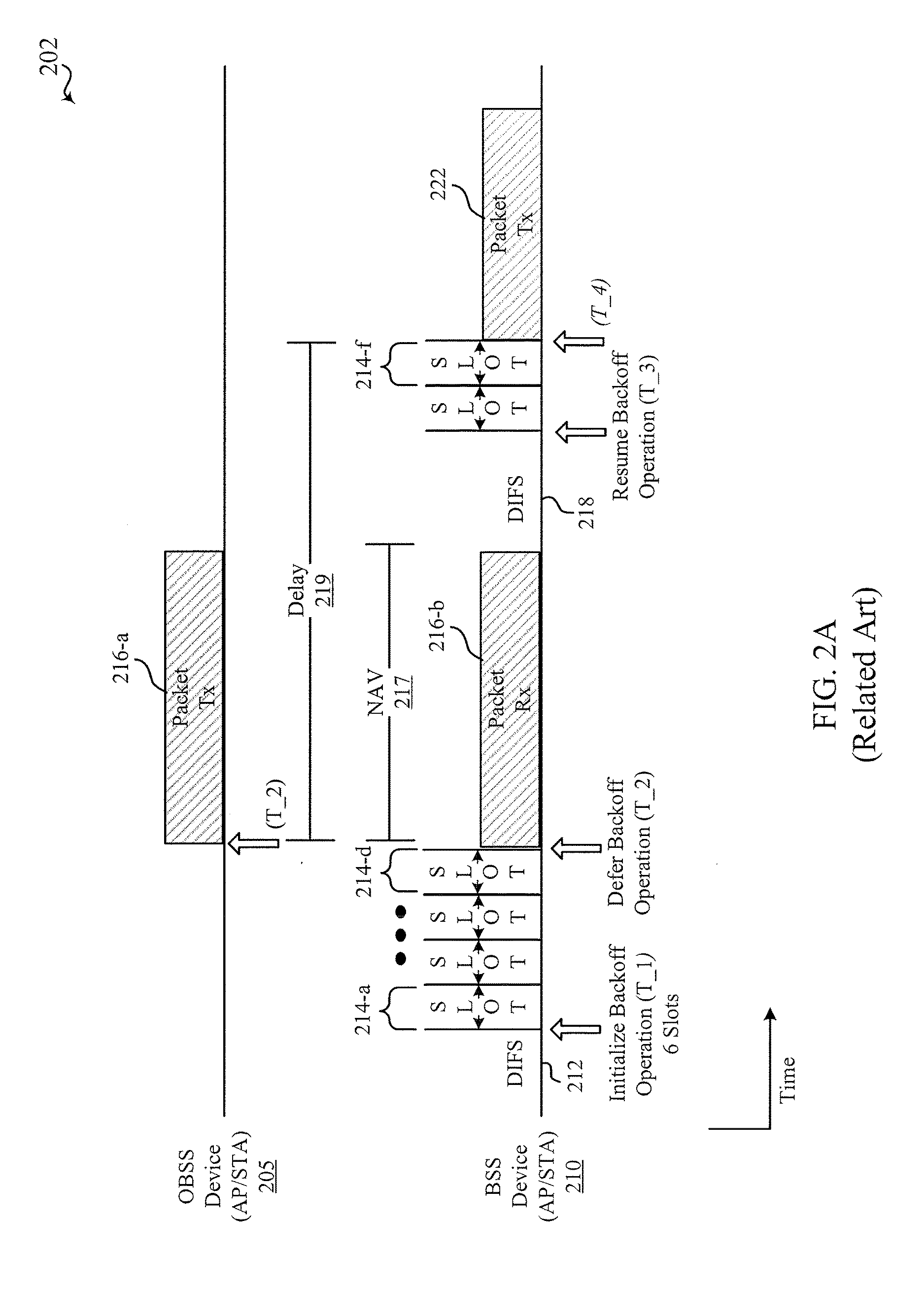Backoff mechanism techniques for spatial reuse
a backoff mechanism and spatial reuse technology, applied in the field of telecommunications, can solve problems such as unnecessari waste of channel resources, affecting the stas in another bss, and problems related to channel or medium usage, and achieve the effect of reducing the delay in transmitting traffi
- Summary
- Abstract
- Description
- Claims
- Application Information
AI Technical Summary
Benefits of technology
Problems solved by technology
Method used
Image
Examples
Embodiment Construction
[0019]Various concepts will be described more fully hereinafter with reference to the accompanying drawings. These concepts may, however, be embodied in many different forms by those skilled in the art and should not be construed as limited to any specific structure or function presented herein. Rather, these concepts are provided so that this disclosure will be thorough and complete, and will fully convey the scope of these concepts to those skilled in the art. The detailed description may include specific details. However, it will be apparent to those skilled in the art that these concepts may be practiced without these specific details. In some instances, well known structures and components are shown in block diagram form in order to avoid obscuring the various concepts presented throughout this disclosure.
[0020]As discussed above, some WLAN network deployments may be dense (e.g., have a large number of STAs deployed within the coverage area of multiple APs), which may result in...
PUM
 Login to View More
Login to View More Abstract
Description
Claims
Application Information
 Login to View More
Login to View More - R&D
- Intellectual Property
- Life Sciences
- Materials
- Tech Scout
- Unparalleled Data Quality
- Higher Quality Content
- 60% Fewer Hallucinations
Browse by: Latest US Patents, China's latest patents, Technical Efficacy Thesaurus, Application Domain, Technology Topic, Popular Technical Reports.
© 2025 PatSnap. All rights reserved.Legal|Privacy policy|Modern Slavery Act Transparency Statement|Sitemap|About US| Contact US: help@patsnap.com



